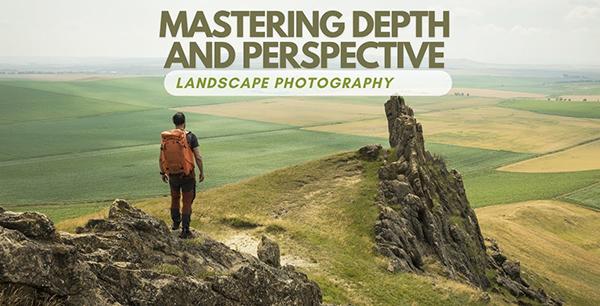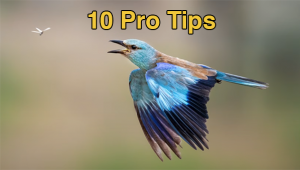Shoot Dynamic Travel & Nature Photos with Depth & Dimension (VIDEO)

There are numerus reasons your landscape photos may not faithfully capture a spectacular scene you witnessed in the field. Perhaps you got the exposure wrong, the composition wasn't as good as possible, or you missed the proper point of focus. But there's another common problem that's easy to rectify in the camera, without turning to Photoshop or Lightroom.
One of the best methods of transforming good photos into great ones is by mastering the use of depth and dimension. Doing that will guide a viewer's eye through an image and help you avoid uninspiring photos that look flat. You'll learn a few tricks for doing just that in the four-minute tutorial below.
Romanian pro Toma Bonciu (AKA "Photo Tom) specializes in landscape, travel, and adventure photography, and he demonstrates his favorite in-camera techniques for creating captivating landscape photos in barely four minutes. His tricks for avoiding flat-looking photos include adding scale by including familiar objects in the frame, experimenting with different perspectives, and incorporating leading lines.

These straightforward methods work with whatever gear you own. They merely requires that you scrutinize a scene with a few key variables in mind and compose the scene a bit differently than you may have in the past. As Bonciu says, "Creating depth in landscape photos will make your images much more dynamic. The perspective will change, and the feel of the photo will be incredibly different from a simple, flat image."
Bonciu discusses two basic problems that result in boring photos without depth, and he has solutions for both. One thing to keep in mind is that a viewer doesn't have the benefit of what you saw that attracted you to a spot and made it so interesting. The example he provides is a scene with unique rock formations in the foreground that weren't included in the frame. Here the result was a wide-open plain without any point of reference to grab attention and create interest.
He demonstrates how a strong foreground element in a photo, particularly when shooting with a wide-angle lens, will "connect a viewer to the rest of the landscape" by adding a sense of dimension. Incorporating leading lines in the frame is another way to add depth and will also direct a viewer's eyes exactly where you want them to go—thereby simplifying and making more sense of potentially confusing scenes.

Bonciu moves on to images that are much different from the first one that was bathed in sun. These are more complex locations that include both bright sun and deep shadows. As you'll see, the trick for adding depth and dimension under these conditions is to position yourself in the shadows and shoot towards the light. This is a very powerful technique.
The lesson concludes with a few more simple tips on how to boost the impact of flat photos by adding perspective and a sense of scale. This helps convey the size of objects in a scene, and how far away they are from the camera position and each other.
After watching this episode head over to Bonciu's YouTube channel where you'll find more helpful advice on photographing the great outdoors.
We also recommend watching an earlier tutorial we posted, with several tips for shooting beautiful landscape photos in harsh light from another experienced pro.














































